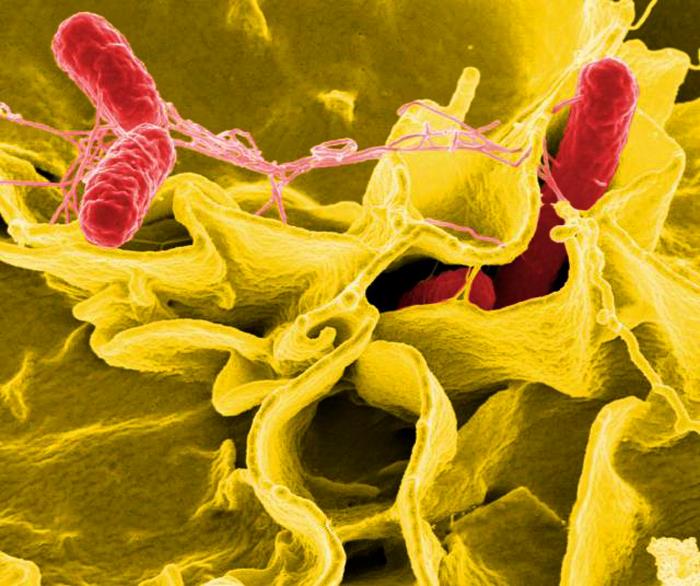 Our epidemiologists and food safety specialists have been hard at work, alongside partners at the county health departments, CDC, and FDA to investigate a large national Salmonella outbreak. As of today, a total of 66 cases of Salmonella Poona have been reported in 6 counties in Arizona. Many of these cases (75%) are in children 17 and younger. We’re one of 27 states that are part of this outbreak – 285 cases have been reported nationally as of yesterday evening.
Our epidemiologists and food safety specialists have been hard at work, alongside partners at the county health departments, CDC, and FDA to investigate a large national Salmonella outbreak. As of today, a total of 66 cases of Salmonella Poona have been reported in 6 counties in Arizona. Many of these cases (75%) are in children 17 and younger. We’re one of 27 states that are part of this outbreak – 285 cases have been reported nationally as of yesterday evening.
By interviewing people who are sick with Salmonella and identifying which foods they have eaten in common, epidemiologists across the country have been able to narrow down the likely source of the outbreak to garden variety cucumbers grown outside of Arizona. This detective work led food safety specialists around the state to collect cucumbers for testing at our Arizona State Public Health Laboratory, where one cucumber tested positive for Salmonella.
Right now, it looks like only garden variety cucumbers grown outside of the U.S. are linked to this outbreak. Andrew & Williamson Fresh Produce of San Diego, CA initiated a voluntary recall of their garden cucumbers, which are identified as “Limited Edition” brand pole grown cucumbers grown and packed by Rancho Don Juanito in Mexico. English cucumbers (the kind usually found wrapped in plastic), Persian cucumbers (the mini cucumbers that look like pickles), and domestically grown cucumbers have NOT been associated with this outbreak and should be safe to eat.
People who are sick with Salmonella usually experience diarrhea, fever, and stomach cramps about 12 to 72 hours after they eat something contaminated with Salmonella bacteria. Most people are sick for 4 to 7 days and can get better without treatment. For more information on Salmonella, please head over to our Salmonella webpage. Also, check out FAQs about this outbreak.










I am getting over my 4th day of diarrhea, and I ate many cucumbers bought at Food City Surprise last month.
But you need to examine my stool to be sure, and I have 2 cucumbers left which have started to rot.
On your page
http://www.azdhs.gov/phs/oids/epi/salmonella-poona/index.php
you say:
“…There is no need to report directly to public health.”
How did you count 66 cases?
Don’t you want to know about more cases? Get more data?
Don’t you want to further understand the scope and distribution (map) of this infection?
An online reporting page could help.
Your webpage should link to a national online reporting page.
This CDC Salmonella map is not current, showing 60 cases in Arizona, not 66.
http://www.cdc.gov/salmonella/poona-09-15/index.html
and I had to search for how to report, which I expect your site to provide.
How to Report a Foodborne Illness
http://www.cdc.gov/foodsafety/outbreaks/investigating-outbreaks/report-illness/index.html
which tells me to ignore your “Do Not Report” command:
“Please contact your local health department, also known as a county or city health department, if you believe you or someone you know became ill from eating a certain food. Ask to speak with the environmental health specialist, or sanitarian, about a possible food problem. Refer to your state health department website to find more information about how to contact your local health department.”
I’d say you guys don’t want this extra work. Why? Budget?
Thank you for your questions and we hope you are starting to feel better. In order to best answer your questions I have included them below with our response:
“…There is no need to report directly to public health.”
How did you count 66 cases?
Cases of Salmonella are reported to the health department through laboratory-based reporting. All of the cases linked to this outbreak were counted because they had a stool test ordered by a healthcare provider, the specimen was sent to a laboratory, and there it tested positive for Salmonella. The healthcare provider or laboratory then notified public health that the person had Salmonella. We are asking that people who believe they are sick with Salmonella get tested by a healthcare professional. There is no other way to determine if a person’s illness is linked to this outbreak.
Don’t you want to know about more cases? Get more data?
Cases of Salmonella that are reported to the health department are contacted by phone by a public health investigator. The investigator gathers information, including whether they are employed in a high-risk occupation (food service, daycare, or healthcare), information about others who were ill, and exposure to known sources of Salmonella, such as food, animals, and outdoor activities. Sometimes cases are contacted more than once to gather additional details about exposures. This information is used to identify outbreaks and to provide education on preventing Salmonella infections.
Don’t you want to further understand the scope and distribution (map) of this infection?
Information that we receive from laboratory-based reporting and interviews is how public health identifies the source of an outbreak. That information also guides public health in determining the scope and distribution of the outbreak.
An online reporting page could help.
Your webpage should link to a national online reporting page.
Unfortunately, there is no national reporting site. Individuals who believe they are experiencing a foodborne illness may contact their local health department. Local health departments have a complaint line (or website) that can be used to report a suspect foodborne illness. If individuals are ill, it is also recommended they visit a healthcare provider to be tested for foodborne illnesses. The healthcare provider would then report any foodborne illnesses to the health department for follow-up.